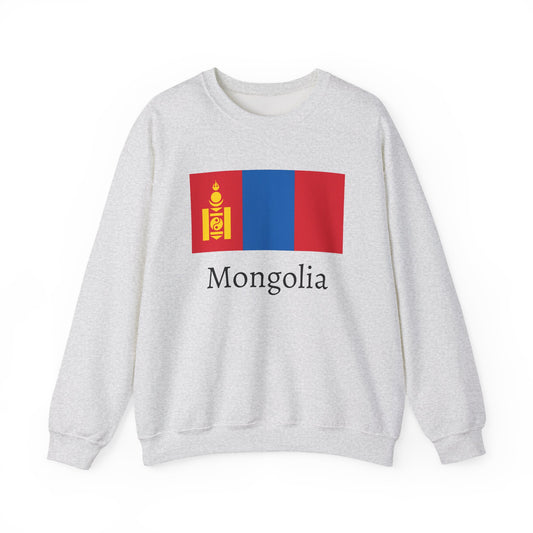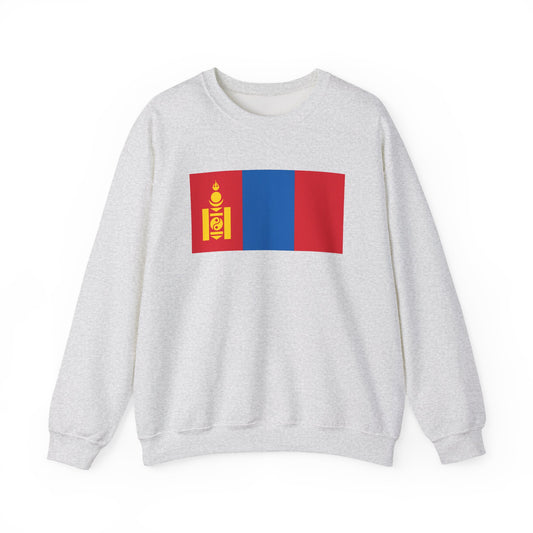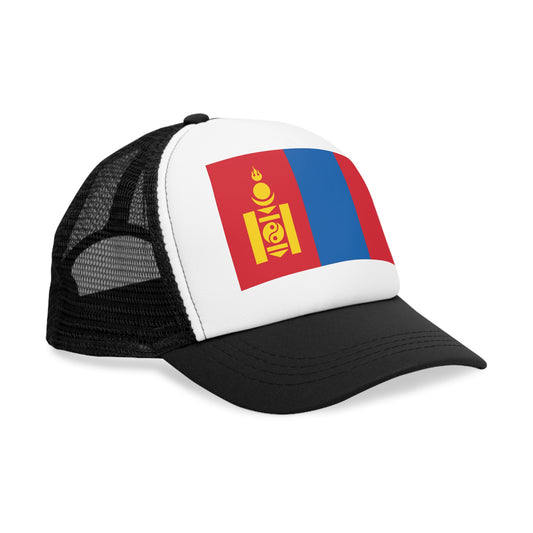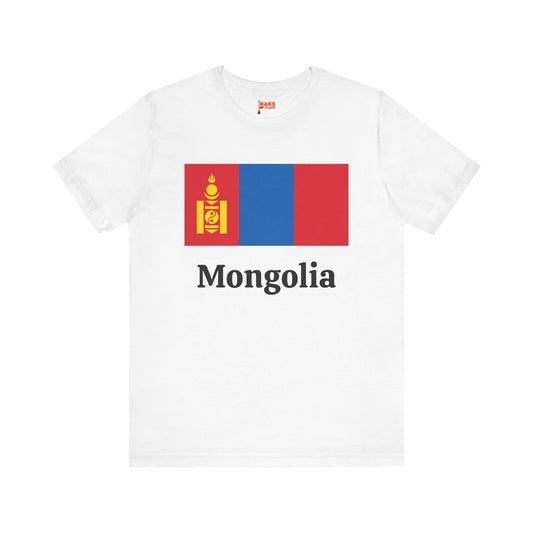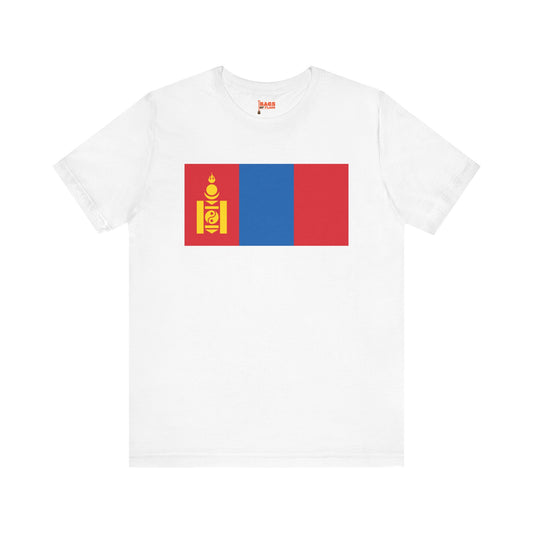-
Mongolia Sweatshirt
Regular price $34.15 USDRegular priceUnit price / per -
Mongolia Flag Sweatshirt
Regular price $34.15 USDRegular priceUnit price / per -
Mongolia Backpack
Regular price $59.79 USDRegular priceUnit price / per -
Mongolia Mug
Regular price $11.65 USDRegular priceUnit price / per -
Mongolia Trucker Cap
Regular price $14.90 USDRegular priceUnit price / per -
Mongolia Hoodies
Regular price $34.40 USDRegular priceUnit price / per -
Mongolia Flag Hoodies
Regular price $34.40 USDRegular priceUnit price / per -
Mongolia T-shirts
Regular price $22.79 USDRegular priceUnit price / per -
Mongolia Flag on T-shirt
Regular price $22.79 USDRegular priceUnit price / per
Collection: Mongolia
The Mongolian flag is a powerful symbol representing the country's rich history and cultural heritage. While many may recognize its distinct design and colors, there is much more to uncover about its significance beyond its visual representation.
Overview of the Mongolia Flag's Design and Colors

The flag of Mongolia showcases a visually striking and meaningful arrangement with its trio of vertical stripes in red, blue, and red. This color scheme is not only vibrant but steeped in symbolism. The national emblem is prominently displayed at the heart of the flag's left-hand side, featuring the iconic golden-yellow soyombo symbol against the red backdrop. This emblematic detail enriches the flag's aesthetic and imbues it with a deeper layer of significance.
The central blue stripe nods to the vast, overarching skies that are a quintessential part of Mongolia's natural landscape, symbolizing peace and serenity. Meanwhile, the flanking red stripes celebrate the valor and endurance of the Mongolian people. Together, these elements forge a flag that is not only a national emblem but also a visual narrative of Mongolia's enduring spirit and intrinsic values.
Historical Context: From Adoption to Evolution
The Mongolian flag's journey through history is fascinating and symbolic of the nation’s evolving identity. Initially adopted on February 12, 1992, the current design marked a pivotal moment in Mongolia's transition to democracy, symbolizing a break from its Soviet-influenced past and a step towards crafting its unique identity on the world stage. This was not the flag’s first iteration, however. Mongolia's flag has undergone several changes over time, reflecting the nation's shifting political and cultural landscapes. Before the 1992 adoption, the Mongolian People's Republic flag bore socialist symbols, showcasing Mongolia’s alignment with the Soviet Union during that era. Each alteration to the flag's design has been a mirror to the country's internal changes, capturing the essence of Mongolia's journey through different epochs.
The removal of the socialist star and the addition of the soyombo symbol were not merely aesthetic changes. Still, they were deeply symbolic, signifying the nation's embrace of its historical roots and cultural heritage. This evolution of the flag underscores Mongolia’s resilience and adaptability, demonstrating how national symbols can evolve to reflect the changing values and aspirations of a country. The flag’s history is a testament to Mongolia’s ability to navigate significant transformation while remaining anchored to its rich heritage and traditions.
Symbolism Embodied in the Flag

The Mongolian flag is imbued with deep symbolic meaning that transcends its visual appeal. The central blue stripe is emblematic of the eternal blue sky, a fundamental aspect of the Mongolian worldview that reflects peace, tranquility, and the nation's limitless potential. This reverence for the sky is deeply rooted in Tengrism, an ancient belief system that places the sky at the center of the natural world and human existence.
The red stripes flanking the blue center symbolize progress and prosperity, signifying the strength and resilience of the Mongolian people. These colors also evoke the country's heroic past and determination to thrive in the present and future. Together, these hues create a visual representation of the nation's landscape, with the vast blue sky overarching the fiery vigor of its land and people.
At the forefront of the flag, the soyombo symbol is a testament to Mongolia's rich cultural heritage and independence. This complex emblem contains representations of fire, sun, moon, earth, and water, which are essential to life and deeply significant in Mongolian culture. Additionally, the two triangles pointing away from each other signify the defeat of external enemies, while the horizontal rectangles represent honesty and justice. The yin-yang-like symbols within the soyombo express the harmony of opposites, underscoring the Mongolian ethos of balance and unity in diversity.
Each element of the flag’s design weaves together a story of Mongolia's past, present, and aspirations for the future, making it a profound emblem of national identity and pride.
Current Relevance of the Mongolia Flag
In contemporary Mongolia, the flag is more than just a national emblem; it symbolizes unity and national pride, prominently displayed on various significant occasions. From the vibrant celebrations of Naadam, Mongolia's most important festival showcasing traditional sports and cultural practices, to solemn state ceremonies and military parades, the flag is a constant, unifying presence. It also plays a crucial role in international arenas, representing Mongolia at diplomatic events, sports competitions, and global forums, helping to foster a sense of national identity and pride on the world stage.
While discussions about the flag's design and its symbolism occasionally arise, reflecting the dynamic nature of public discourse and national identity, these debates underscore the flag's importance to the Mongolian people. It continues to be a focal point of national pride and a reminder of the country's rich heritage and aspirations for the future, reinforcing its relevance in the fabric of Mongolian society today.
Additional Facts and Protocols Surrounding the Flag
There are distinct protocols that govern the display and handling of the Mongolian flag to ensure it is always honored. When raised or displayed, the flag must be positioned prominently and higher than any other flag. Additionally, when the national flag is flown alongside other flags, it must be to the viewer's left, showcasing its precedence. The flag can never be flown in a faded or damaged condition, symbolizing the nation's strength and resilience.
A unique aspect of the Mongolia flag is its customary display from sunrise to sunset during national holidays and significant events, embodying the nation's enduring spirit. During these occasions, the flag is commonly ceremoniously raised in Sukhbaatar Square, the central square of Mongolia's capital, Ulaanbaatar, in a display of national pride and unity.
An interesting fact about the Mongolian flag is the symbol symbol's inclusion not only as a cultural emblem but also as a beacon of the country's sovereignty and independence. This highlights the flag's role as a constant reminder of Mongolia's rich history and aspirations for the future, weaving together the nation's past, present, and hopeful outlook.


